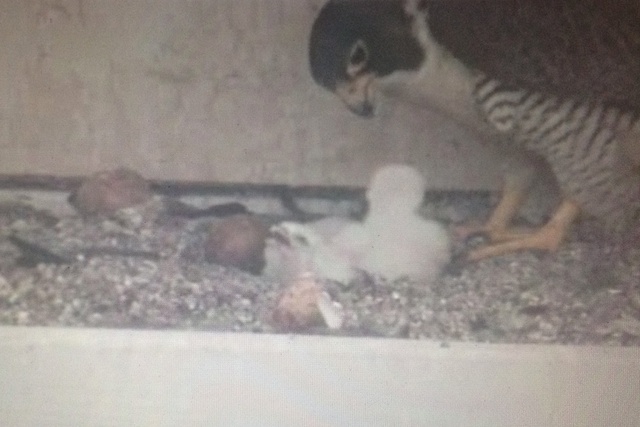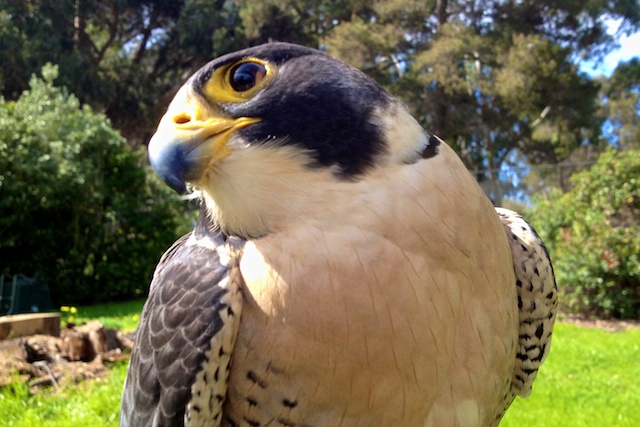Peregrine falcon (Falco peregrinus) nest cameras in San Francisco and San Jose have been giving citizens the unique chance to watch these animals up-close since 2005. Because this species was nearly extinct in the 1970s -- with only two pairs left in California -- it is a real thrill to see them thriving alongside humans today.
According to the University of Santa Cruz Predatory Bird Research Group (SCPBRG), the San Jose pair "Carlos" and "Clara" have experienced a relatively smooth breeding season. Clara was documented laying the first egg of the season February 19th, and a fourth egg on March 4th. The first egg hatched on Easter Sunday, March 31st! By Monday, three chicks were present.

With large concrete buildings in urban areas resembling natural cliffs, peregrine falcons have been drawn to nest each year at San Francisco's PG&E building and San Jose City Hall. Although San Francisco's nest site regularly gets media attention, few people know that the San Jose falcon pair is actually easier to see on foot. With a more open landscape, the corner of 4th and San Fernando Street is recommended for viewing.
Like all falcons, peregrines specialize in hunting other birds, and Carlos and Clara will soon have to hunt for their growing brood. In urban areas, pigeons and blackbirds are a primary food source. Peregrines have very large feet for their body size to grab birds in midair and a "tomial" tooth, which is a special notch in their beak to sever their prey's spinal cord. In addition, they are the fastest animal on the planet, with one peregrine clocked at diving 242 mph to catch prey.
After hatching, the parents will continue to stay on the nest for another week. In roughly three weeks, SCBRG researchers will place leg bands on the chicks that will help identify individuals. Shortly after, the chicks will begin learning how to fly. This is the most dangerous time of any flighted bird's life, and learning how to fly in an urban environment with cars and people can make it even more difficult. In about six weeks, the chicks will be independent and perhaps find an urban nesting site of their own.
